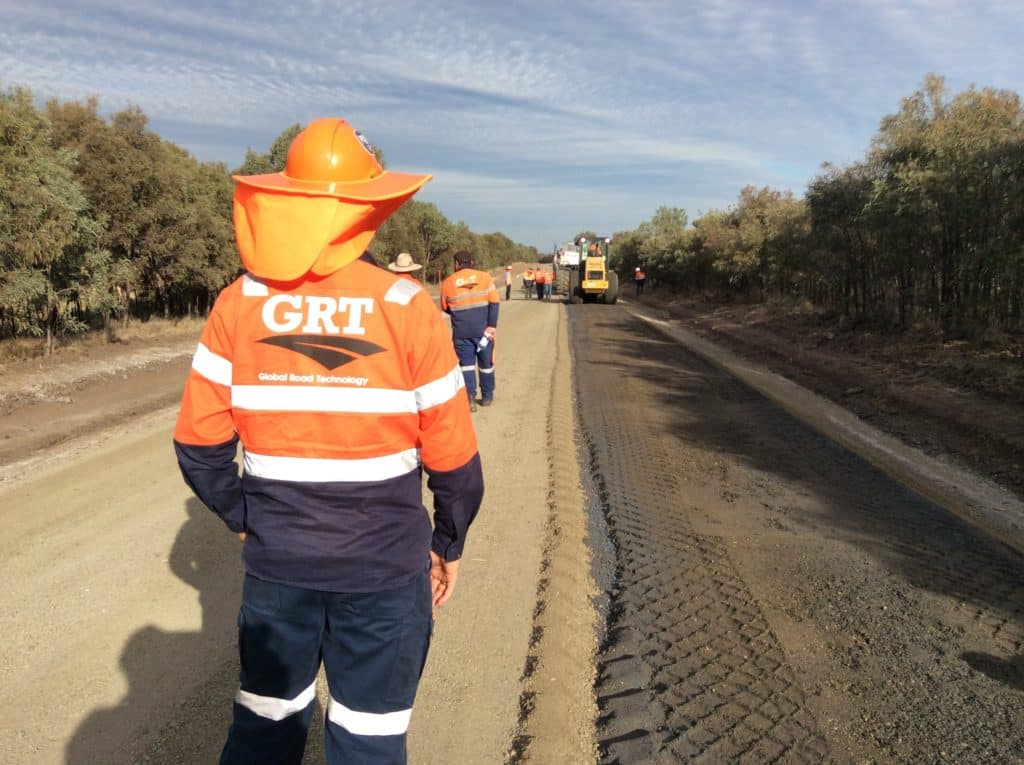A Pavement design thickness is a function of the intended load to be exerted on it, in other words, highways with high traffic volumes present greater thicknesses in surface, base and subbase layers.
When analysing a potential pavement, a designer must take into consideration two stress components; tensile stress at the bottom of the surface layer, and compression stress at the top of the subgrade.
Tensile stresses at the bottom of surface layers are the main factor associated with fatigue cracking in asphalt, and compression stresses at the top of the subgrade are associated with permanent deformation can be analyzed using fatigue modelling found in the Austroads design manual for example.
A pavement must present enough thickness to withstand traffic demands. An increase in the thickness of asphalt minimises the effects of tensile stress at the bottom, however, asphalt is an expensive material so more frequently stabilizing of the base, subbase and subgrades is a more viable option.
The stabilisation of base layers can occur either by using mixtures with a cement of between 2% to 5% by mass, or up to 7% cement or lime for subgrades. Besides pozzolanic agents, the base can be treated with foam bitumen, polymers, or by using a small proportion of polymer to improve the pozzolanic properties. Global Road Technology (GRT) has over recent years invested heavily in research to improve pavement performance, with an efficient polymer stabilization agent; Polymer Cement Modifier (PCM), which improves the resilience modulus and tensile strength.

Are environmental regulations, health and safety concerns or potential profit loss a concern right now?
GRT polymers have presented good results, which have been independently verified by satisfied clients. When compared with cement in the same proportion, GRT PCM presents a 15% improved unconfined compressive strength (UCS), and up to a 50% improvement in flexural strain.
The advantages of using a PCM base treated can be verified through simulation and mechanistic analyses, stress-strain analyses, and fatigue modelling, methodologies for pavement design from Austroads. For example; a conventional pavement with 100mm of asphalt, 150mm of the base, and 150mm of subbase, with a life cycle for fatigue cracking, is approximately 5×107 equivalent single axles (ESAs), of 8.2 tonnes. To analyse this life cycle with a GRT PCM stabilized base, with a resilient modulus of 1000 MPa, the pavement would only need 75mm of the asphalt layer and 75mm of the stabilised base layer.
In other words, for the same life cycle offers a reduction of 62,5% pavement thickness. PCM stabilisation also decreases the costs associated with excavation works and time required for pavement construction. In-situ or plant mixed stabilisation can be used not only to decrease raw material costs but also to minimize life cycle maintenance and increase total design life, resulting in significant savings when compared to conventional methods.
The improvements GRT PCM stabilisation offers in material properties such as the resistance to stresses in lower pavement layers – in particular, tensile stresses at the bottom of asphalt layers, resulting in reduced fatigue cracking, potholes, and maintenance on roads, highways and vehicles.
For more information please contact us: https://globalroadtechnology.com/contact-grt/
Troy Adams
Troy Adams is the Managing Director of Global Road Technology (GRT) Specialising in Engineered Solutions for Dust Suppression, Erosion Control, Soil Stabilisation and Water Management. A pioneering, socially conscious Australian entrepreneur, Troy Adams is passionate about health and safety and providing innovative solutions that are cost-effective to the mining industry, governments and infrastructure sectors. Troy is also a tech investor, director of companies like Crossware, Boost, Hakkasan, Novikov and more.

